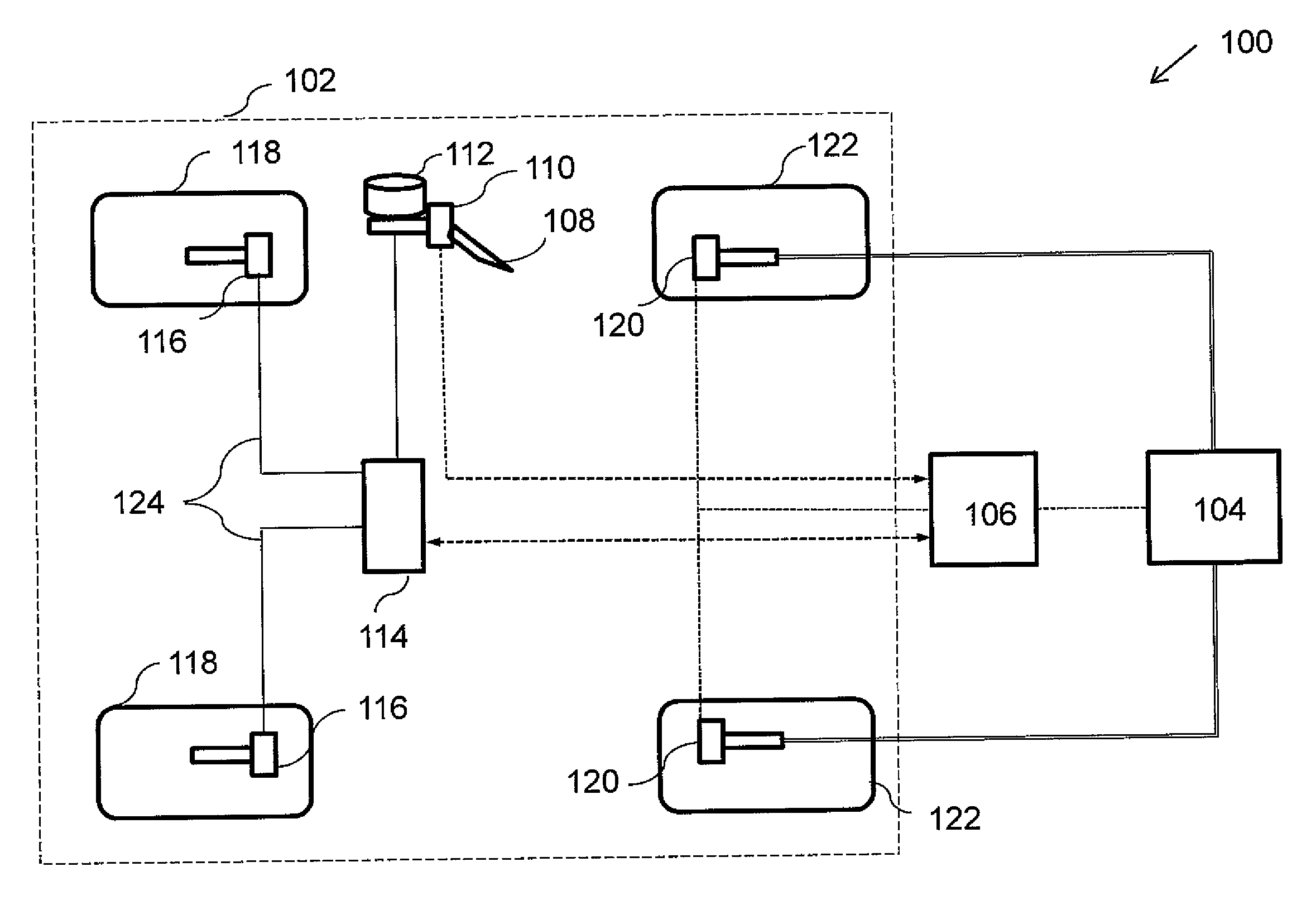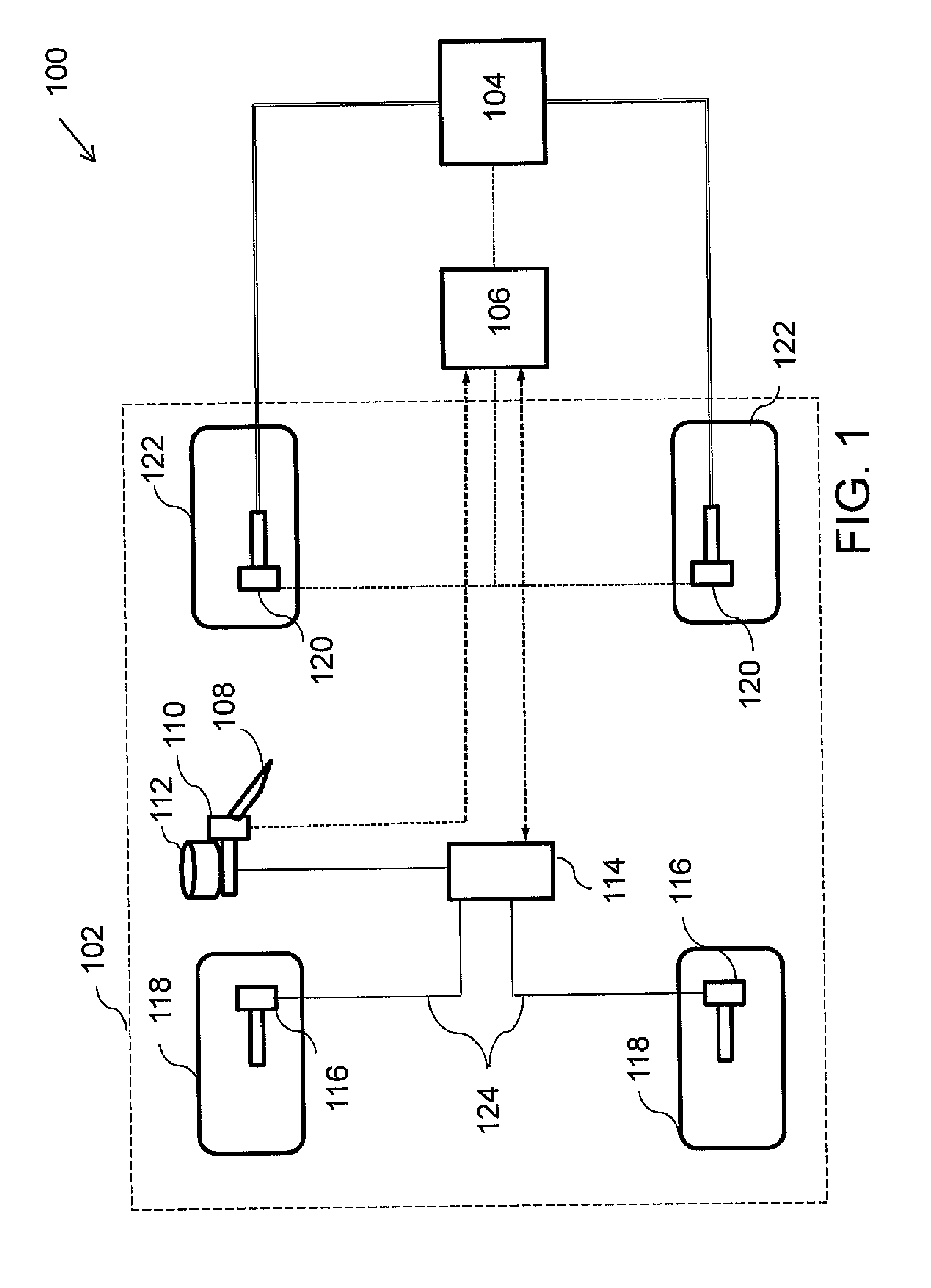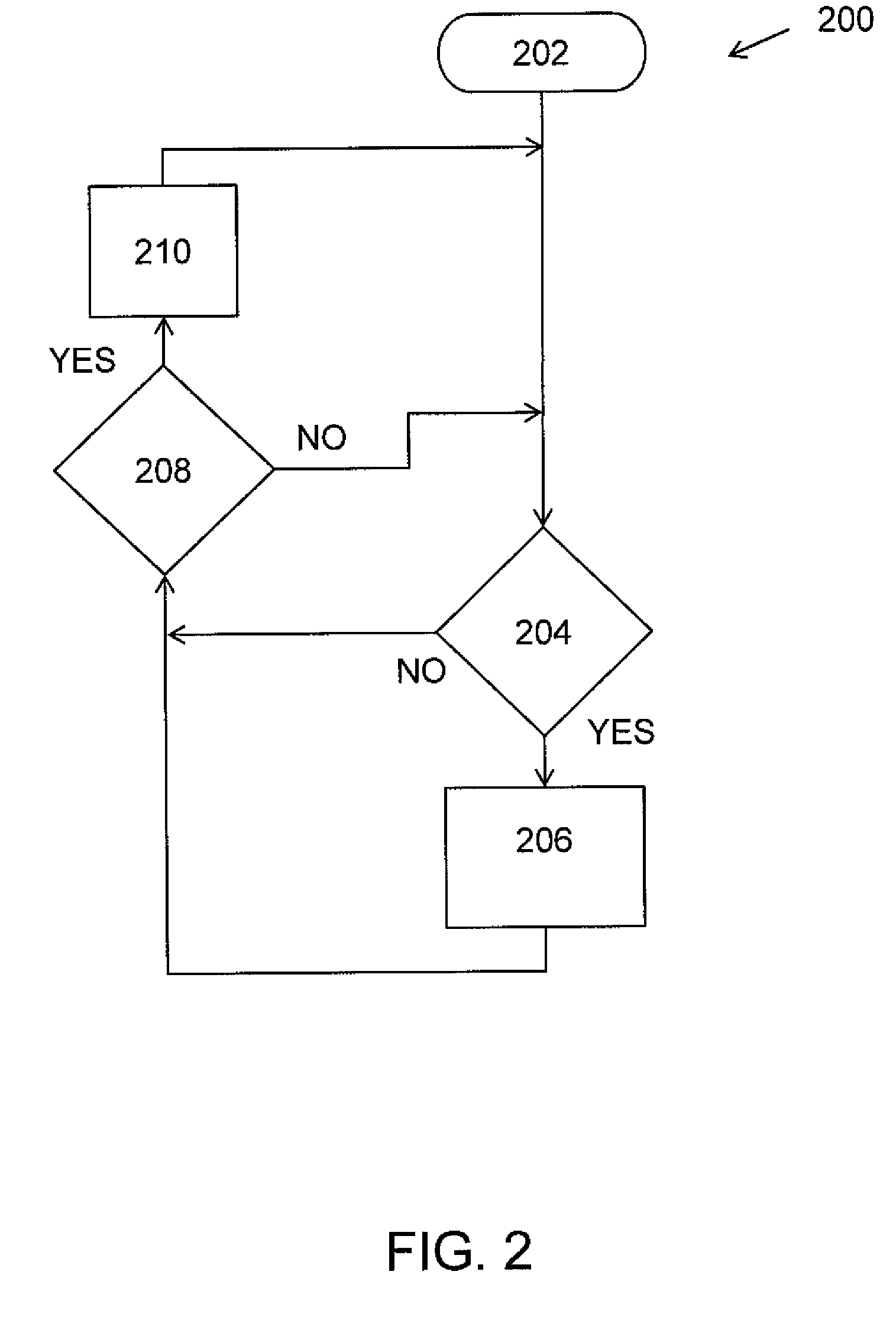Regenerative braking system for a hybrid electric vehicle and a corresponding method
a hybrid electric vehicle and regenerative braking technology, applied in the direction of braking systems, braking components, transportation and packaging, etc., can solve the problems of limiting or decreasing the regenerative braking torque, difficult to achieve the braking force, and driver's unsatisfactory sense of security with respect to the functional and capacity of the braking system, so as to achieve a cost-effective and reliable regenerative braking system
- Summary
- Abstract
- Description
- Claims
- Application Information
AI Technical Summary
Benefits of technology
Problems solved by technology
Method used
Image
Examples
Embodiment Construction
[0028]Various aspects of the invention will hereinafter be described in conjunction with the appended drawings provided to illustrate and not to limit the invention, wherein like designations denote like elements, and variations of the aspects are not restricted to the specific shown aspect, but are applicable on other variations of the invention.
[0029]FIG. 1 illustrates a schematic diagram of a regenerative braking system 100 for a hybrid electric vehicle according to the present invention. The regenerative braking system 100 as shown in FIG. 1 comprises a braking system 102, an electric machine 104 and an electronic control unit (ECU) 106.
[0030]The braking system 102 comprises a brake pedal 108, a hydraulic master cylinder assembly 110, a reservoir for hydraulic fluid 112, an anti-lock braking system 114, hydraulically actuated friction brakes 116 at front wheels 118 of the vehicle and electrically actuated friction brakes 120 at rear wheels 122 of the vehicle, which typically is ...
PUM
 Login to View More
Login to View More Abstract
Description
Claims
Application Information
 Login to View More
Login to View More - R&D
- Intellectual Property
- Life Sciences
- Materials
- Tech Scout
- Unparalleled Data Quality
- Higher Quality Content
- 60% Fewer Hallucinations
Browse by: Latest US Patents, China's latest patents, Technical Efficacy Thesaurus, Application Domain, Technology Topic, Popular Technical Reports.
© 2025 PatSnap. All rights reserved.Legal|Privacy policy|Modern Slavery Act Transparency Statement|Sitemap|About US| Contact US: help@patsnap.com



